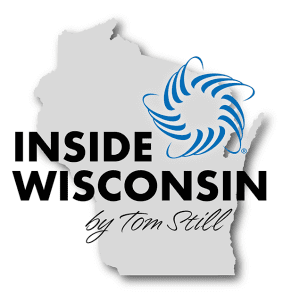MADISON, Wis. – It must be tough being an energy planner these days. Whether you’re working for a utility company, a public regulator or a private firm hoping to control costs by conserving electricity use, it must be confusing to follow the debate around breaking free from carbon-based generation.
“Solar is the future!” some advocates will shout. “Wind is best!” other may counter. “Don’t forget geothermal, hydrogen, storage or (fill-in-the-blank)” is yet another refrain.
Back on the table in a seemingly major way is nuclear energy, in part because technology around small-module reactors has improved but also because Congress has overwhelmingly passed legislation to overhaul parts of the approval process for such power plants. It cleared the House of Representatives 365-36 and the Senate 88-2 in late June, margins rarely seen in today’s political climate. It awaits President Biden’s signature.
The arguments for revival of nuclear fission are familiar. It is emissions-free, unlike coal or natural gas, and robust enough to produce reliable electrical power loads when the sun doesn’t shine and the wind doesn’t blow.
Most nuclear waste can be reprocessed, with only about 5% dangerous enough to be stored in isolation. The trick is safely recycling that 5%, which is part of the work taking place in places such as Oak Ridge National Laboratory in Tennessee but also closer to home. For example, SHINE Technologies in Janesville is looking to use fusion to recycle fissile material from reactors, past and future. The nuclear engineering program at UW-Madison is also part of the research mix.
Speaking at a recent WisPolitics luncheon in Madison, the chairwoman of the Public Service Commission of Wisconsin highlighted passage of the federal ADVANCE Act, which stands for Accelerating Deployment of Versatile, Advanced Nuclear for Clean Energy. She made what amounted to a “bring-it-on” endorsement considering small module reactors.
“If I had it my way, it would be happening faster and be more readily available,” said the PSC’s Summer Strand, who also noted European countries are making progress on small modular reactors.
Of course, it will take money and expertise to do so, and at least one Wisconsin utility is assessing the possibility. Dairyland Power in western Wisconsin signed a memorandum of understanding with NuScale Power in 2022 to examine building a small modular reactor.
“The bottom line is: If we are for a less-carbon future, if you are against carbon, you need to be for nuclear. I don’t know a simpler way to put it,” Dairyland Chief Executive Officer said during a 2023 Wisconsin Technology Council luncheon in Madison. “If you want there to be less carbon, and you want a reliable, safe, economic grid that will keep together our economic 24/7 engine, nuclear is part of that future.”
Traditional nuclear fission already plays a role in the state’s energy mix, with two reactors at the Point Beach plant supplying about 15% of the state’s annual net generation since 2013, when the Kewaunee Nuclear Power Plant shut down. Before then, those two plants accounted for about one-fifth of the state’s electricity generation.
Small module nuclear fission reactors are much smaller (one-third generating capacity) and somewhat easier to construct than traditional nuclear power plants. Experts believe they are much safer and more adaptable to different generation needs, which helps to explain the deep congressional interest.
Still, there are reasons to doubt whether “next-generation” reactors will become big part of the answer.
Solar, wind and other alternative sources continue to add to the U.S. and world generation capacity. Battery storage technology has improved to the point that in 2023, investors for the first time put more money into stationary energy storage than they did nuclear. Small-module fission reactors will be expensive to build, and paying for them will require a lot of patient money.
Even with aggressive carbon reduction goals in place, the question is whether solar, wind and other alternative sources will close that gap fast enough to limit the role of nuclear energy. The race is on, and it’s at least good to know there are options.
Still is president of the Wisconsin Technology Council in Madison. He can be reached at news@wisconsintechnologycouncil.com.






